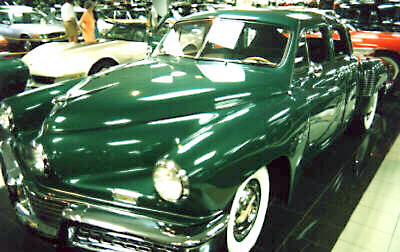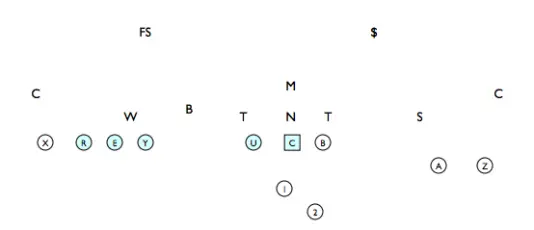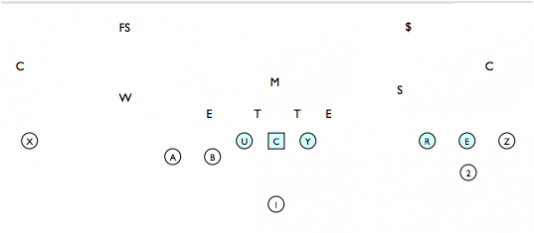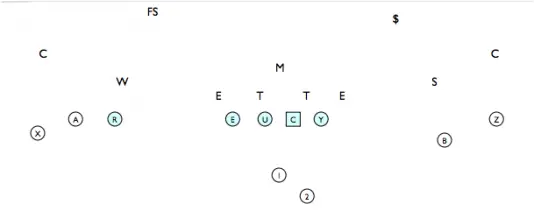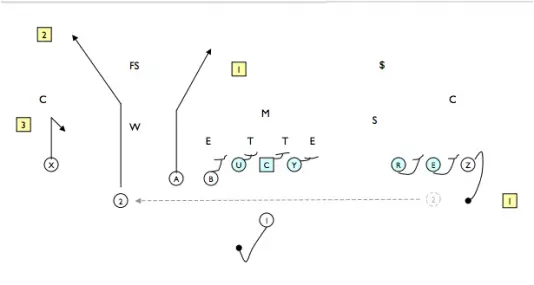The Tucker
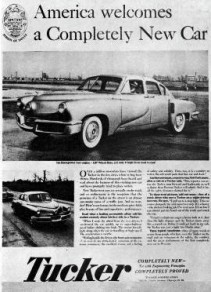 Chicago, 1947. An independent company operated out of Preston Tucker’s family barn begins the production of a futuristic car unlike anything that had ever been seen before. Tucker Car Corporation had developed something beyond the wildest imagination of big automobile companies in the midwest, creating a vehicle that protected drivers like never before, allowed maintenance with ease, provided unparalleled comfort, and felt truly like the future of automobiles.
Chicago, 1947. An independent company operated out of Preston Tucker’s family barn begins the production of a futuristic car unlike anything that had ever been seen before. Tucker Car Corporation had developed something beyond the wildest imagination of big automobile companies in the midwest, creating a vehicle that protected drivers like never before, allowed maintenance with ease, provided unparalleled comfort, and felt truly like the future of automobiles.
Even before it was unveiled to the public, the Tucker Sedan was an instant hit; articles portraying the futuristic car drew such a fervor from the public that it became the talk of the nation before a single one was ever even built. People wanted to know, where can I see a Tucker? How can I drive a Tucker? Where can I buy a Tucker? Thousands showed up for its unveiling…
However, Tucker Corporation’s new-found attention that placed them ahead of the existing car superpowers stirred harsh, crooked criticism from media under the control of the big car companies, and an eventually crippling investigation by the Securities and Exchange commission spurred by political pressure by Tucker’s competitors to suppress Tucker’s new car by any means necessary spelled the end of the Tucker automobile.
Only 50 Tuckers were ever built, but nearly all are still operable to this day, and even all these years later Tucker Sedans still turn heads every time they appear on the road. It took a few years, but eventually GM and other car manufacturers adopted many of the features that Tucker introduced. Tucker had completely re-imagined the automobile, years ahead in innovation from everyone else competing to be the best, and the auto industry would never be the same.
The A-11
Fast forward sixty years, and football geeks may remember a recent movement that, just like the Tucker, truly re-imagined for better or worse the game of football (Note: any coaches that do not like the spread offense, best not be standing/eating when you read this article). Fans went gaga when video of the odd offense went viral, gracing the front page of Yahoo for a time to showcase this strange new method of football more akin to backyard Nerf games than organized football, yet drove defenders and coaches batty trying to figure out how to stop it.
It was called “spread offense on steroids,” and with teams still clamoring to try to find any way imaginable to create an answer for the spread, the prospect of now finding a way to have to defend this was simply too much of a threat…it had to be stopped.
The movement peaked a few years ago at Piedmont High School in California, where Kurt Bryan and Steve Humphries created the A-11 offense, which is nothing short of the biggest, perhaps most radical step forward in football since the zone-read was discovered. The offense allowed a small-school roster with limited size and numbers to put up big-school numbers at Piedmont, and as expected, the A-11 offense dazzled fans and coaches everywhere (aside from the defensive coordinators responsible for installing a gameplan for it every week), and seemed to be the next big thing in football.
Suddenly everyone was asking aloud, why isn’t OUR team running the A-11? Could we run the A-11 offense? I want to see more of the A-11! Fans were rabid about the A-11, tantalized by the possibilities this mysterious new offense could possibly hold. A sense of wonderment abound with each new video showcasing it. Football fans were instantly obsessed with the Tucker, er, the A-11.
Simply put, it didn’t last long in high school. The A-11 used an exception to the scrimmage-kick rule, that allowed 11 players to wear eligible numbers (1-49, 80-89) at the same time, but the NFHS, essentially the NCAA of High Schools, dropped the hammer on the A-11, stating, “on first, second and third down, there must be four players on the line with numbers 50-79. The snapper may have a number 1-49 or 80-89, but he is ineligible.”
While the A-11 may have been short-lived in its initial state, its ability to spark the imagination has not wavered as it may have simply signaled the inevitable. Despite the attempts to suppress the new way of thinking, the A-11 may well be the Tucker, the first wave of the future.
Formations:
If defenses ever had problems identifying formations, strengths, and motions in traditional offenses, they’re in for a world of hurt against the A-11. When the offense aligns like what is pictured below it is bound to cause mass confusion: The common logic would be that the defense would be set blanketing the three receivers, and trying to defend against the potential screen behind the wall to the QB’s left.
But the A-11 offense allows the guard or “B” player to go out for a pass, since he’s the last player on the line of scrimmage. Add in the fact that two quarterbacks could be used in this formation, a it becomes a seriously deadly offense, one that is both capable of racking up big numbers while simultaneously dropping jaws with nothing even remotely similar to ever compare it to in history..
It doesn’t stop there…
Throw in a motion, and it can lead to an inside zone concept, outside zone tazer concept, anything- limited only by the coach’s imagination. The end result makes for not only an entertaining bordering on hilarious offensive approach, but it causes mass confusion as the defense struggles to identify and react to the outlandish formations and leverages that the A-11 can use with its multi-purpose personnel.
The A-11 can even morph into a more conventional look without sacrificing its uniqueness, here in a 2×2 set.
Running Plays:
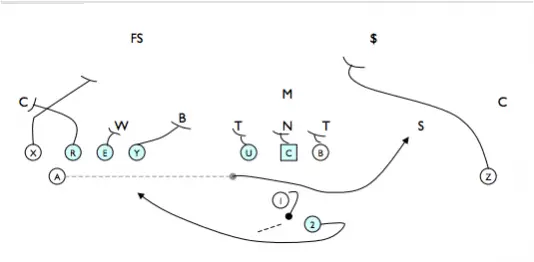 The A-11 uses plenty of misdirection to compensate for its shortcomings in traditional blocking leverages. Here, the defense aligns itself to a cross-formation motion, only to find it is at a significant disadvantage should the ball carrier (2) reach the “wall” to his left. Plenty of additional series of plays can be called from this motion set, including a lead speed option, zone read, toss, dive, and even a trap play if the “A” receiver is up to it.
The A-11 uses plenty of misdirection to compensate for its shortcomings in traditional blocking leverages. Here, the defense aligns itself to a cross-formation motion, only to find it is at a significant disadvantage should the ball carrier (2) reach the “wall” to his left. Plenty of additional series of plays can be called from this motion set, including a lead speed option, zone read, toss, dive, and even a trap play if the “A” receiver is up to it.
The A-11 also touches into a lot of single wing direct-snap concepts, meant for a downhill running QB/Wildcat player, for short yardage situations.
Passing Plays:
While the running game has the potential to bust huge plays, it’s safe to say that the A-11 revolves mostly around the passing game, as the A-11’s advantages are best exploited through the air.
If making an oversimplified west-coast style playbook, the basics would include Smash, and Flood plays, along with some kind of play-action. Absolutely, there are answers to all of that in the A-11.
Along with the ability to use traditional route packages comes the ability to make a pseudo-offensive line somewhere else; essentially allowing the A-11 to create the most unique backside tags possible.
Check it out:
Here is the traditional smash concept on one side, with a backside screen on the other, essentially destroying any possible method for a defense to defend the entire play all at once.
This flood concept uses a five-man protection scheme with a backside screen to the previously ineligible “E” receiver. Basically, this play is the ultimate zone defense nightmare.
Play-action is even better, as the QB will almost never have to run a naked bootleg with extra blockers placed outside the pocket. Putting so much strain on a defense before a play, and then running a constraint play? That’s nasty.
But what can this offense accomplish? Since the A-11 has literally thousands more options with regards to formations, motions, and plays than a traditional offense, identifying trends and preparing a gameplan for the A-11 could become nearly impossible.
Perhaps the use of two quarterbacks could intrigue more offensive coordinators at high levels? Perhaps the Oregon model for linemen could have an even greater use with the flexibility of formations?
Consider this—Oregon head coach Chip Kelly gets high praise for being a mad scientist football innovator for his ability to move around six eligible pieces on the field on every play (RBs/WRs/QB). Just imagine what Chip could do if, by using an A-11 approach, all 11 players on offense became eligible.
Whatever comes next for football, the A-11 offense is still in the conversation, as a system so revolutionary, so ahead of its time with outside the box thinking, that the powers that be had no choice but to try to suppress it, giving ample time for defensive coordinators a chance to catch their breath and try to brainstorm on how anything with so many options could ever be stopped?
And so, the Tucker Sedan was developed well ahead its time, and found success at the expense of the super-corporations, which eventually forced Tucker out of the business. So too did the A-11 offense, as it was developed perhaps decades before it will be accepted in the highest levels, also at the expense of the preexisting high school football powers.
Today, the 43 Tucker Sedans still in existence are remembered as the template for car safety, and are valued at $1.2 million. What will the A-11 be worth in time?
Related Articles:
Chip Kelly Update: Everything's Good Again ...
Chip Kelly Update: Wailing and Gnashing of Teeth
Shock and Awe -- The Oregon Ducks' Football Hangover Effect
Despite Lopsided Score, Georgia State "Never Stopped Believing"
Hope Springs Eternal for Ducks
Incompetent Pac-12 Officials: How Do You Miss ALL of THIS?
Josh is a College Football enthusiast from sunny Southern California. He has written for several self-operated prep sports blogs, as well as multiple SB Nation sites. In High School, Josh played football for four years, and helped create and operate the team’s no-huddle system. Most of Josh’s football knowledge branches from watching College Football his entire life, and is backed up by his first hand experience in both option and spread offenses. Above all, though, he is a proud student at the University of Oregon.
@joshschlichter

